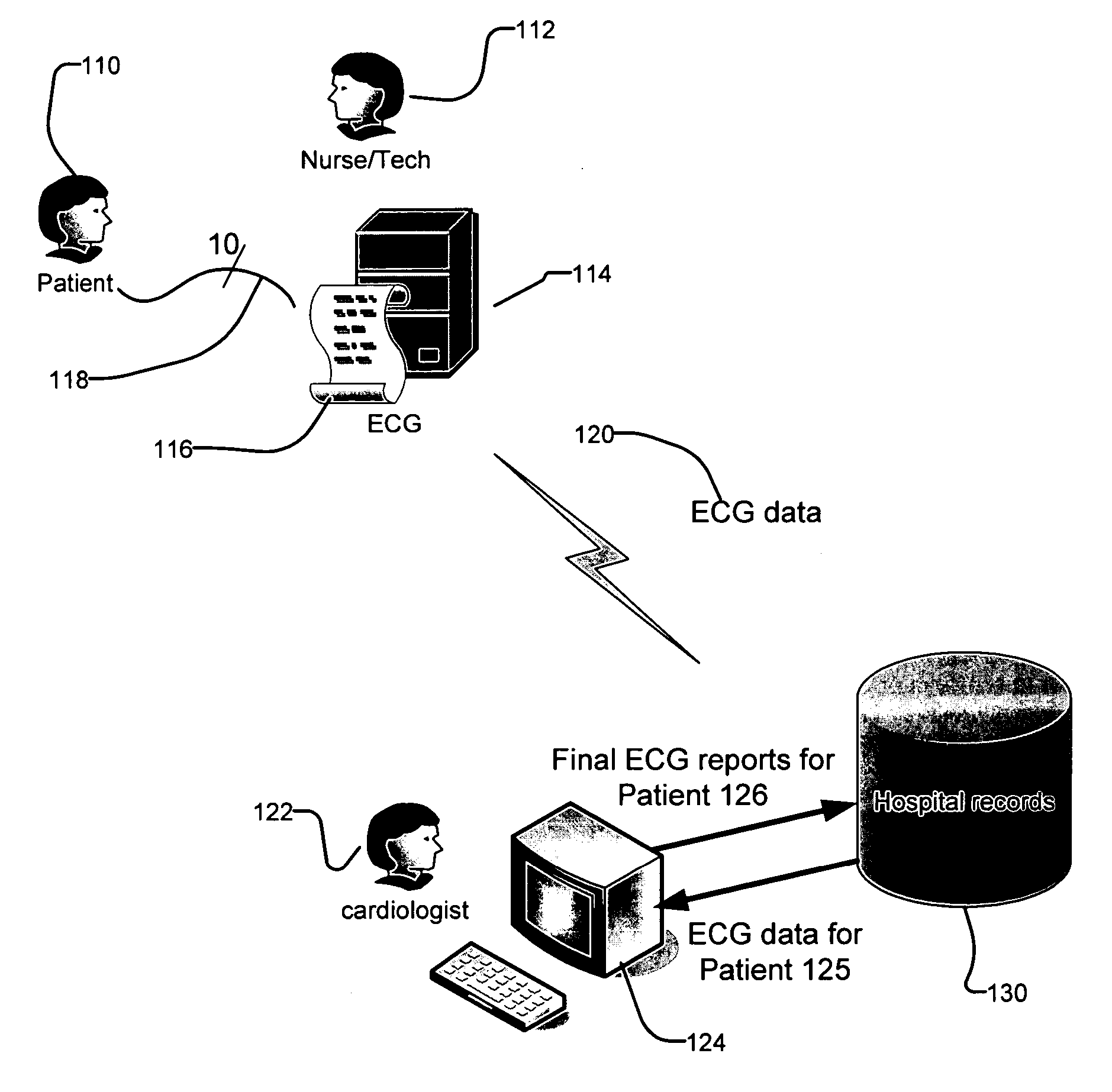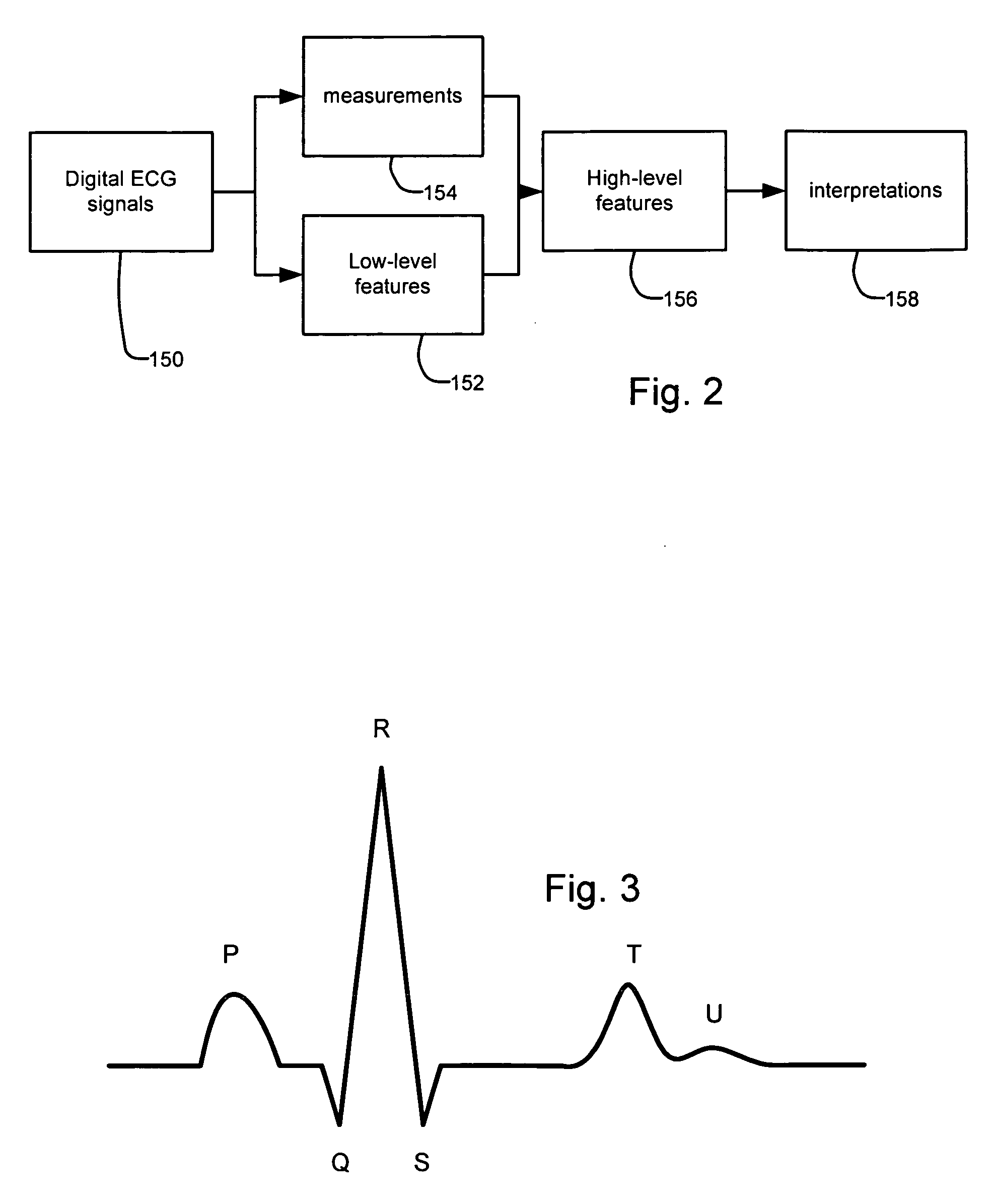Feature-based editing for electrocardiography
a feature-based editing and electrocardiography technology, applied in the field of electrocardiography diagnosis, can solve the problems of inability to accurately determine the low-level, the error is commonly made by the computer in making measurements, and the non-trivial number of machine-generated ecg interpretations will be incorrect, so as to facilitate analysis and generation of the final, reduce inadvertent errors and/or inconsistencies, and improve the accuracy of machine-generated ecg data interpretation.
- Summary
- Abstract
- Description
- Claims
- Application Information
AI Technical Summary
Benefits of technology
Problems solved by technology
Method used
Image
Examples
example 1
[0043] The duration of one portion of the ECG wave, called the QRS complex, is used to determine if there is an interruption in the flow of electricity in the heart's conduction system. The QRS duration is a feature that directly leads to specific diagnoses on the ECG report. If the QRS duration feature is calculated to be greater than 120 milliseconds (and the QRS configuration matches a certain pattern), the condition is referred to as Left Bundle Branch Block, or “LBBB.” This means that the electricity is not conducting properly through the Left Bundle of the conducting system.
[0044] In the presence of LBBB on the ECG report, it is not possible to make any definitive statements about other clinical conditions such as anterior myocardial infarction (“AMI”) or left ventricular hypertrophy (“LVH”).
[0045] It is not uncommon for a previous ECG report for a patient to show a QRS duration of 118 milliseconds (below the cutoff for LBBB), along with an AMI and LVH. When the next ECG on ...
example 2
[0048] P-waves are very tiny, and hard for the computer to distinguish on an ECG, especially if the patient is moving or other noise is present. The computer might also incorrectly think that P-waves are present, getting confused by the presence of noise. In this latter case, the reading might be “Sinus rhythm” and “1st degree AV block.” A measurement of the PR Interval will be reported (the time duration between the occurrence of the P-wave and the occurrence of the QRS complex).
[0049] In a statement-based editing environment, the cardiologist might change the reading of “sinus rhythm” to “atrial fibrillation.” If the reading is left this way, which is very common, there is a conflict. “1st degree AV block” means that the PR interval is longer than 200 milliseconds, but there is no PR interval if the is no P-wave.
[0050] The correct next step is for the cardiologist with convention editing systems is to remove measurement of the PR interval, and delete the line that says “1st degr...
PUM
 Login to View More
Login to View More Abstract
Description
Claims
Application Information
 Login to View More
Login to View More - R&D
- Intellectual Property
- Life Sciences
- Materials
- Tech Scout
- Unparalleled Data Quality
- Higher Quality Content
- 60% Fewer Hallucinations
Browse by: Latest US Patents, China's latest patents, Technical Efficacy Thesaurus, Application Domain, Technology Topic, Popular Technical Reports.
© 2025 PatSnap. All rights reserved.Legal|Privacy policy|Modern Slavery Act Transparency Statement|Sitemap|About US| Contact US: help@patsnap.com



